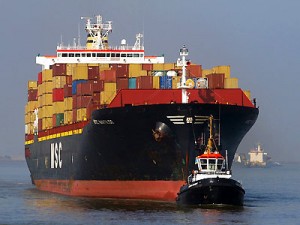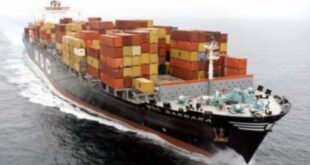
In starting your own freight brokerage business, MMS Plus Weekly in this piece explains how you can get started in the freight brokerage industry, from your first steps to hiring employees, marketing your business and managing your finances. In this edited excerpt, the author offers tips for handling the two main problems you may run into when working as a freight broker.
In the freight business, the ability to deal with problems is essential. What can go wrong? Everything! And no matter how well you handle your part of the process, there are certain things that are out of your control but for which your shippers will look to you for assistance and solutions.

Because brokers aren’t carriers, they’re generally not liable for loss or damage of a shipment while it’s being transported. They can, however, be held liable if they’re negligent or if they offer services other than brokerage. Aside from the liability issue, part of your service package should include assisting customers with problems whether you’re responsible or not.
Transit Delays

It’s virtually impossible to list all the reasons why freight might be delayed in transit. Weather is always a major concern. Trucks break down, traffic gets heavy, highways are closed, drivers get sick—and your customers will expect you to deal with it all. Any time the freight doesn’t move precisely as expected, your customers will be looking to you for situation management and information.

Cargo Loss or Damage Claims
As the broker, you’re not responsible for cargo loss or damage claims. Keep in mind that although common carriers are generally liable for loss or damage to the goods they carry, they’re not responsible for losses occurring due to acts of God, war or government.
Through defaults on the part of the shipper or for losses resulting from the nature of the goods. Whatever the reason for the loss or damage, you need to understand the process of dealing with claims and be prepared to assist your shippers when necessary.
If the driver doesn’t review the bill of lading or inspect the freight before the shipment is loaded, the carrier doesn’t really have any options other than to pay a claim if the cargo is damaged or short when it arrives at the destination.
There’ll be times when the loading crew makes mistakes but realizes them after the fact and initiates a bill of lading change, which relieves the driver and carrier of potential claim responsibility. But you can’t rely on them to do so, and drivers should examine each load to be sure the documents match the shipment, and sign for exactly what’s received.
Limitations to thorough inspection of cargo
There’ll be times when it’s impractical or impossible for the driver to thoroughly inspect a shipment. For example, if the carrier drops a trailer at the shipper’s location to be loaded by the shipper’s employees and then picked up later for transport, the driver won’t know what went on the trailer.
Or if the shipper assembles and shrink-wraps pallets of boxes, the driver may not be able to precisely count the number of boxes on each pallet. In those cases, the driver should write “shipper’s load and count” and/or “contents and condition unknown” on the bill of lading, which shifts the responsibility for shortages, overages and concealed damage back to the shipper.
At the destination, the consignee’s receiving person should also inspect and count the shipment and note any discrepancies or visible damage on the delivery receipt.
In the case of a potential claim
When you learn of a potential claim—possibly from the shipper, consignee or driver—immediately notify the carrier and dispatcher. Sometimes they hear of a possible problem from the driver making the delivery and let you know. Or you might not find out about a claim until you receive the proof of delivery and bill of lading with damage notations.
How the claim is handled often depends on the amount in question and the history and reputation of the shipper. For a small claim where damage was clearly noted on the delivery receipt, the carrier will probably pay without a detailed investigation.
For a larger claim, the carrier may send out an inspector to take a look at the damaged goods. A carrier can decline to pay a claim if it determines that the cause of the damage was inadequate packaging, so consignees should keep the damaged items and the packing materials until the claim is resolved.
Shippers usually have standard forms used to file their claims. All you need to do is provide the shipper with the name and address of the carrier in question and, if necessary, assist them in reaching a fair and prompt settlement.
Procedures for filing a claim
If your shipper isn’t familiar with procedures for filing a claim, explain that they’ll need to submit the following information to the carrier on a signed form: Carrier’s name and address; Total claim amount; Date of pickup; Date of delivery; Claim history; Shipper’s full name and address; Consignee’s full name and address and Damages or shortages.
The shipper will also need to attach any required or appropriate supporting documentation, including: Freight bill; Bill of lading; Invoice; Inspection report, if any and Itemized statement of loss
The carrier has 30 days to either pay the claim or acknowledge the claim and advise the shipper what else it needs to process the claim. Federal law requires carriers to investigate claims promptly and either settle the claim within 120 days or advise the claimant of any delay and then continue advising the claimant of the status of the claim every 60 days.
Responding to Problems
Certainly it’s possible for you to lose a customer over a service problem that wasn’t technically your fault. In most cases, though, you’ll find that shippers understand when things go wrong—when drivers don’t show up, when equipment breaks down, when crashes occur on the highway and so on.
What’s critical is that you don’t ignore problems or try to hide them from your shippers or carriers. Be proactive. When you find out about a problem, make sure everyone who needs to know is notified immediately and then do everything you can to get the freight back on the road.
 MMS PLUS NG – Maritime, Aviation, Business, Oil and Gas News Online Newspaper with coverage in Maritime, Oil and Gas, Aviation, Power and Energy as well as Financial News
MMS PLUS NG – Maritime, Aviation, Business, Oil and Gas News Online Newspaper with coverage in Maritime, Oil and Gas, Aviation, Power and Energy as well as Financial News









